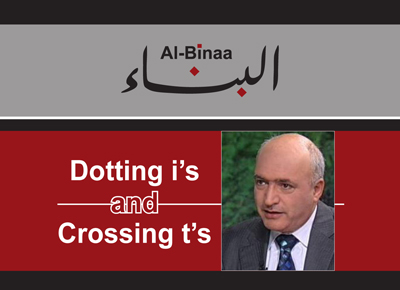
November 02, 2024
Nasser Kandil
• The statements of leaders in the Islamic Republic of Iran have taken on new meanings since the assassination of Hezbollah’s Secretary-General, Sayyed Hassan Nasrallah, and the historic speech by Supreme Leader Ayatollah Ali Khamenei. In his speech, Khamenei addressed Iran’s responsibility following this assassination, signalling Iran’s understanding that the American-Israeli alliance has moved into a strategic offensive phase, using Sayyed Nasrallah’s assassination as an entry point to undermine the Lebanese resistances which represents the Axis’ excess power embodied by Hezbollah. Sayyed Nasrallah’s popularity as a symbol of resistance, both regionally and globally, represents the added value by the Resistance Axis as a policy-making force. Allowing Washington and Tel Aviv to succeed in this endeavour would lead to a profound geopolitical shift in the region, ultimately diminishing Iran’s regional and international standing.
• Iran swiftly recognised that the struggle over regional deterrence is now the central issue. Allowing the occupying entity to take control of the regional deterrence balance, based on the assumption that Iran would avoid direct confrontation with it and the U.S., would mean relinquishing Iran’s role in this equation. Thus, Iran’s response to the assassination of Palestinian resistance leader Ismail Haniyeh in Tehran – previously delayed to allow room for diplomatic efforts to end the Gaza war – came as a threefold retaliation, addressing Haniyeh’s assassination, Nasrallah’s assassination, and a demonstration that Iran is unafraid of direct confrontation with either the occupying entity or the U.S. While Iran does not seek war, it stands prepared for it and is unwilling to yield its regional leadership to avoid such conflict. The response was decisive and powerful in its intensity and messaging.
• Iran is now preparing for another response to a new act of aggression. Khamenei refused both to downplay and exaggerate the importance of this latest provocation, stressing the necessity of conveying Iran’s strength – a message that, he suggested, the initial response may not have fully delivered. Yesterday, IRGC commander General Hossein Salami declared that the next retaliation would exceed the occupying entity’s expectations, making it clear that Iran’s response is inevitable and will be far stronger than anticipated by both Israel and the U.S. Through this, Iran intends to assert its power and dominance, signalling that it is the region’s foremost power regardless of the entity’s efforts and U.S. support.
• In a recent interview with Al-Mayadeen, Kamal Kharrazi, head of Iran’s Strategic Council on Foreign Policy and advisor to Supreme Leader Khamenei on strategic affairs, made significant statements. He affirmed that “adjusting our nuclear doctrine is still an option if Iran faces an existential threat”, adding, “We currently possess the technical capabilities to produce nuclear weapons; only Supreme Leader Khamenei’s fatwa prevents us from doing so”. Kharrazi also emphasised Iran’s well-established missile capabilities, which have been proven through past operations, and pointed out that the focus now is on the range of these missiles, which continues to provoke Western concerns. He remarked, “When Western countries disregard our concerns about Iran’s sovereignty and territorial integrity, there is no reason for us to heed their anxieties”, announcing that “Iran may indeed expand its missile range”.
• Kharrazi’s statements make it undeniably clear that Iran is waging a significant battle to secure regional deterrence, having calculated its moves meticulously. Should Washington and Tel Aviv fail to account for Iran’s potential actions and retreat, a major war looms on the horizon.





